Effective Laundry Practices for Bed Bug Management
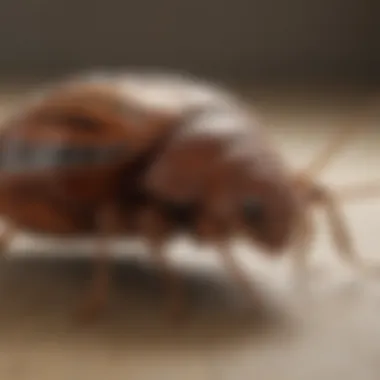
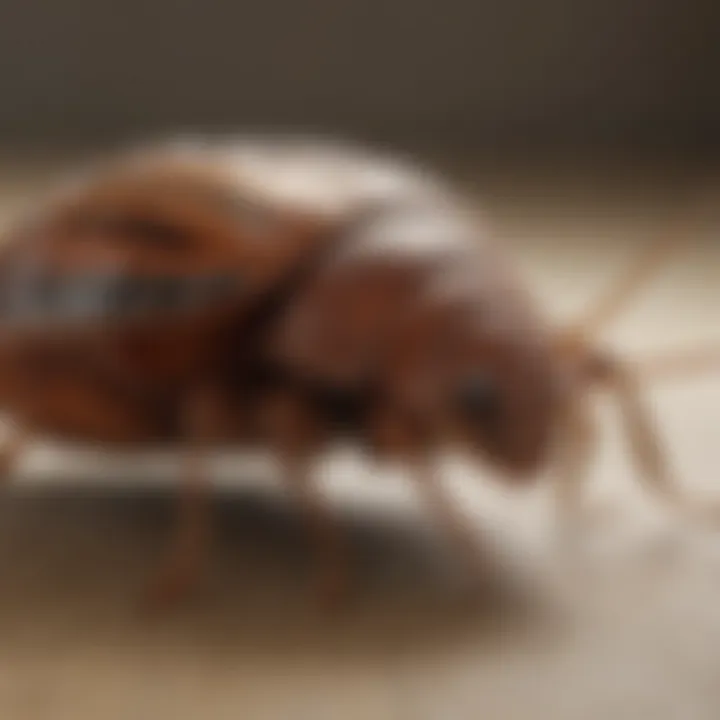
Intro
Bed bugs are notorious pests that can disrupt the tranquility of any home. Their presence often elicits concern and anxiety, making effective management essential for homeowners. This article delves into the critical role of laundry practices in combating bed bugs. With the right techniques, temperature settings, and detergent choices, one can significantly reduce the chances of infestation.
Understanding the Pest
Identification
Identifying bed bugs is the first step toward eradicating them. These insects are small, typically measuring between 1/4 to 1/5 of an inch. Their bodies are flat and oval-shaped, which allows them to hide in crevices. Generally, adult bed bugs are brownish and have a reddish tint after feeding.
It is important to look for signs of infestation such as shed skins or tiny brown spots of excrement. They are often found in bedding, mattress seams, and furniture. Recognizing these signs early can save time and effort when addressing an infestation.
Life Cycle
Understanding the life cycle of bed bugs aids in their management. They go through several stages: egg, nymph, and adult. A female bed bug can lay more than 500 eggs in her lifetime, leading to rapid population growth.
The entire cycle from egg to adult can take as little as five weeks under optimal conditions. This efficiency makes it vital to implement strategies for control, particularly focusing on disrupting their life cycle through effective laundering practices that target all stages of life.
Pest Prevention Strategies
Environment Modification
To prevent bed bugs, modifying the environment is crucial. Reducing clutter in sleeping areas is a practical step. When beds and furniture are well-arranged, it makes it harder for bed bugs to find places to hide. Other measures include sealing cracks or crevices where bed bugs may enter physical spaces.
Also, regular cleaning habits should be enforced. It's recommended to vacuum bedrooms weekly and monitor areas where bed bugs are likely to hide.
Physical Barriers
Using physical barriers can prevent bed bugs from reaching your bedding. Encasements for mattresses and box springs can create a barrier. They should be tightly zipped and durable enough to withstand bed bug activity. Although these measures do not eliminate bed bugs, they can significantly reduce exposure and infestation risks.
Control Methods
Chemical Control
When dealing with an existing infestation, chemical control might be necessary. Products specifically formulated for bed bug eradication can be efficient. However, using these chemicals requires caution. Always follow the manufacturer’s guidelines for safe application and effectiveness.
Biological Control
Biological control measures could also be effective. Certain strains of nematodes or other natural predators have been researched for their potential in managing bed bug populations. While these methods are less common, they can be appealing for those looking to minimize chemical use in their environment.
Utilizing effective laundry practices, such as washing items at high temperatures, can significantly impact bed bug management and prevention.
Culmination
In summary, managing bed bugs requires a multifaceted approach with proper laundry techniques at its core. Understanding the pest, preventing infestations through environment modification, and applying potentially effective control methods are steps toward a pest-free home. Through this comprehensive examination, homeowners can better equip themselves in the ongoing battle against these resilient pests.
Understanding Bed Bugs
Understanding bed bugs is a critical aspect of effective pest management. Bed bugs, scientifically known as Cimex lectularius, exemplify a parasitic relationship with humans, deriving sustenance by feeding on blood. Given their resilience and rapid reproduction rate, knowledge of their biology, behavior, and signs of an infestation will enable homeowners to take appropriate measures quickly.
When one comprehends the unique biological characteristics of bed bugs, it becomes possible to formulate targeted strategies for control. Knowledge of their life cycle, including the egg, nymph, and adult stages, empowers individuals to identify potential problems before they escalate. Additionally, understanding their behavioral patterns allows for better prevention measures.
The effective management of these pests hinges on recognizing signs of infestation as early as possible. These signs can range from physical indicators such as bites on the skin to visual confirmations of the bugs themselves. This awareness can mitigate further complications and expenses associated with severe infestations.
In summary, an in-depth understanding of bed bugs is crucial not only for prevention but also for developing comprehensive laundry practices that contribute towards effective bed bug management.
Biology of Bed Bugs
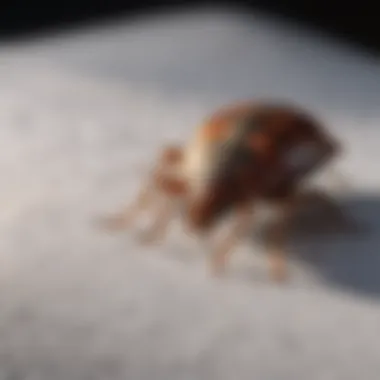
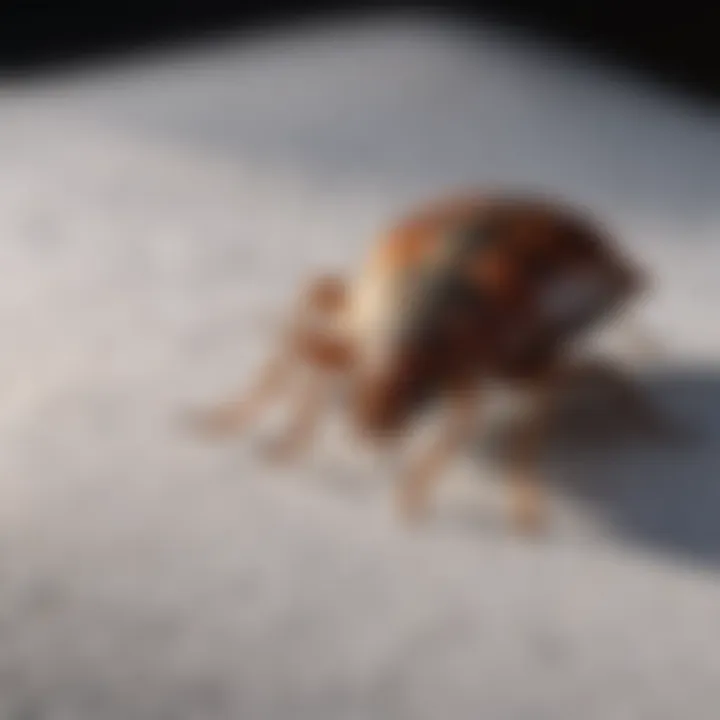
Bed bugs are small, nocturnal insects measuring about 4 to 5 millimeters in length. Typically brownish in color, these pests showcase a flattened oval shape, which allows them to hide easily in crevices and seams. A female bed bug can lay over 200 eggs in her lifetime, which may lead to exponential population growth if not controlled early. These eggs, which appear as tiny white specks, can hatch within a week, adding urgency to the need for effective prevention and control measures.
Bed bugs have a unique feeding mechanism. They insert their elongated mouthparts into the skin of their host to extract blood. This feeding process happens mainly at night, which is why most people are unaware of their presence until the signs become more apparent.
Their ability to survive without a meal for months further complicates their management. This resilience emphasizes the importance of laundry practices. High temperatures in washing and drying processes can effectively kill both bed bugs and their eggs, making clean laundry essential in combating infestations.
Behavioral Patterns
Bed bugs exhibit certain behavioral traits that can both aid in their detection and inform control strategies. They are primarily crepuscular, meaning they are most active during dusk and dawn, aligning their feeding habits with their host's sleep patterns. This tendency enables them to bite without being disturbed, complicating human detection.
Furthermore, the bugs tend to hide in clusters during the day, favoring locations such as seams of mattresses, bed frames, and even behind headboards. As a result, knowing these favored hiding spots is essential for effective inspection and management.
Bed bugs release pheromones, which play a role in their communication and indicate when an area is safe to inhabit. This signaling behavior can lead to the congregation of bed bugs in particular locations. With this knowledge, a thorough inspection of targeted areas can reveal signs of infestation, such as excrement or shed skins, aiding in timely and successful intervention.
Signs of Infestation
Identifying the signs of a bed bug infestation is crucial for any homeowner looking to manage this pest effectively. Here are key indicators to look for:
- Bites: Often, people first suspect bed bugs when they notice bite marks on their skin, typically appearing in a zigzag pattern or in clusters.
- Fecal Stains: Dark spots or smears on sheets, mattresses, or nearby surfaces may be the feces of bed bugs, comprising partially digested blood.
- Egg Casings: Tiny, molted shells found in proximity to sleeping areas may indicate a breeding population.
- Actual Bed Bugs: Spotting the bugs themselves, especially after inspecting common hiding spots, confirms the presence of an infestation.
"Early detection of bed bugs can save homeowners significant time and money, allowing for effective management before infestations become severe."
Vigilance in observing these signs contributes to managing and mitigating infestations. Recognizing these indicators is the first step toward implementing effective laundry practices that can complement a comprehensive pest control strategy.
The Role of Laundry in Bed Bug Management
Laundry plays a crucial role in the management of bed bugs. These pests are resilient and can quickly disrupt a home. Understanding the importance of laundry in this context can empower homeowners to take effective measures against infestations. Laundering practices serve multiple purposes, from eliminating existing bed bugs to preventing new ones from entering your living space. With their ability to hide in various items, like clothing or bed linens, it is essential to incorporate laundry into a comprehensive pest management strategy.
Why Laundry Matters
Laundry provides an effective method for reducing bed bug populations. Washing items in hot water can kill bed bugs at all life stages, including eggs. Regular laundering of clothes, linens, and other fabric items reduces the likelihood of a bed bug infestation. Keeping such items clean ensures that any bugs present are dealt with quickly. Furthermore, incorporating laundry into your cleaning routine can contribute to peace of mind. Knowing that you are actively working to eliminate bed bugs can be reassuring.
Heat Treatment through Washing
Heat is one of the most significant factors when addressing bed bug infestations. Most bed bugs cannot survive extreme temperature changes. Washing clothes or linens in hot water (at least 130°F or 54°C) for a minimum of 30 minutes effectively kills these pests. This method also requires thorough drying. Once items are washed, placing them in a dryer set to a high temperature for at least 30 minutes further reduces the risk of any remaining bugs.
- Hot water washing: Hot water kills bed bugs. Ensure settings meet the needed temperature to be effective.
- Drying temperatures: A high heat setting for drying also assists in eliminating any lingering pests.
The Impact of Detergents
While heat is vital, the choice of detergent can also contribute to effective bed bug management. Certain detergents are formulated to enhance their cleaning capabilities and may help to dislodge and kill any bugs present in the fabric. However, it is important to note that detergents alone may not be sufficient to eliminate bed bugs. They are most effective when combined with washing in hot water and high-temperature drying.
Choosing a detergent that is effective against a range of pests can be beneficial. Homeowners may opt for those marketed specifically for bed bugs or general pest elimination. Ultimately, integrating proper laundry practices, including heat treatment and effective detergents, could significantly impact managing bed bug populations in the home.
Effective Laundering Techniques
Effective laundering techniques play a crucial role in the management of bed bugs. These methods not only help in eradicating bed bugs but also prevent future infestations. Understanding the specific elements involved in laundering provides valuable insights into how this process works. The benefits are clear: proper techniques can protect your home and health. It is essential to adopt a systematic approach such as utilizing appropriate temperatures and sorting laundry effectively.
Temperature Guidelines
Hot Water Washing
Hot water washing is one of the most effective methods for eliminating bed bugs. High temperatures effectively kill bed bugs and their eggs. The key characteristic of this method is that washing items in water that is at least 120°F (49°C) can destroy these pests. This choice is popular due to its simplicity and effectiveness. However, it is important to check the care labels on clothing and linens, as hot water can damage certain fabrics.
Advantages of hot water washing include a high mortality rate of bed bugs and reduced chances of reinfestation. The downside can be the risk of shrinking or fading in delicate fabrics. Therefore, carefully selecting items for hot water treatment is critical.
Drying Temperatures
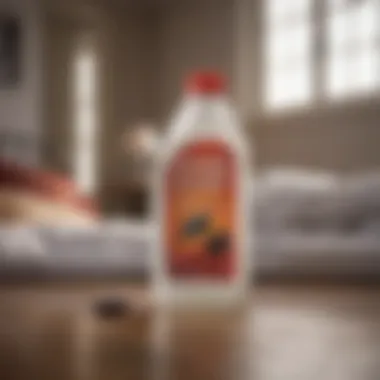

Drying temperatures also play a significant role in bed bug management. A hot dryer setting can reach temperatures that may also kill bed bugs. The key characteristic here is that at least 30 minutes in a hot dryer can effectively exterminate these pests. This method offers a practical approach following washing, reinforcing the efforts made during the laundering process.
The unique feature of drying is its ability to reach higher temperatures than many washing machines. This means it can serve as a secondary line of defense against any bed bugs that survived washing. However, there is a potential disadvantage: excessive heat can cause damage to some items. It is essential to balance effectiveness with care for fabrics.
Sorting Laundry
Separation by Room
Separation by room when doing laundry is a practical approach contributing significantly to effective bed bug management. This method involves sorting laundry according to the rooms where items are found, making it easier to trace and manage potential infestations. The main benefit is that it reduces the risk of cross-contamination between clean and contaminated items.
An important characteristic of this method is its systematic nature, which provides clarity in the process. By isolating items from different areas of the home, it becomes easier to identify specific sources of infestation. One advantage is the enhanced organization, but it requires a bit more time and attention to detail.
Handling Contaminated Items
Handling contaminated items carefully is crucial in preventing the spread of bed bugs during the laundering process. This aspect ensures that individuals do not inadvertently transfer bed bugs from one area to another. The key characteristic of this practice is the use of sealed bags for transporting contaminated items to the laundry area. This reduces the likelihood of bed bugs escaping back into living spaces.
The unique feature of this method is its role in containment. By addressing contaminated items separately, you protect unaffected areas of your home and minimize risks. However, this approach involves being vigilant and thorough, which some may find inconvenient. Still, it is a beneficial choice in creating a comprehensive strategy against bed bugs.
Preventative Laundry Practices
Preventing bed bug infestations is essential for maintaining a safe and comfortable home environment. This section highlights preventative laundry practices that can significantly reduce the risk of bed bugs making their way into your living spaces. Regular and effective laundry habits form the backbone of these preventative approaches. It is critical to approach laundry with a mindset focused on cleanliness and vigilance.
Regular Washing Schedules
Establishing a regular washing schedule is one of the most effective ways to prevent bed bugs from taking hold in your home. By routinely washing bedding, clothing, and any fabric items that contact the body, you minimize the chances of a bed bug infestation. This does not only apply to items that are visibly soiled but also to those that may harbor hidden pests. Regularly washing sheets and pillowcases every week, for instance, can help eliminate any bed bugs that have made a home there.
Additionally, high-risk items, such as blankets and decorative pillows, should also be integrated into this routine. It is vital to consider the laundry habits of guests as well. If guests stay over, encouraging them to wash their clothes can be a wise preventive measure. This diligence in washing can lead to early detection and eradication of any potential problems before they escalate.
Storing Clothes Responsibly
Beyond washing, how you store clothes directly influences the risk of bed bugs. Proper clothing storage is significant for prevention. Keep clothing in sealed containers or zippered bags, especially if you have recently been traveling or received new items. This method provides a barrier, significantly reducing the risk of bed bugs moving in.
When unpacking after travel, immediately wash any clothing in hot water if possible. If washing is not feasible, store items in airtight bags until they can be treated. Ensure that closets and drawers remain organized and free of clutter as disorganized spaces can harbor pests, making it easier for bed bugs to settle in. Keeping items off the floor, particularly in shared living spaces, can also minimize the risk.
Using Bed Bug Proof Liners
Another valuable preventative measure is utilizing bed bug proof liners. These specialized liners are specifically designed to prevent bed bugs from infiltrating mattresses and box springs. Investing in these liners not only protects against current infestations but can deter future ones.
Liners are typically made from durable materials, ensuring that bugs cannot penetrate them. To effectively manage potential infestations, it is advisable to cover all bedding items. These liners can be easily washed and maintain hygiene, which is beneficial. Regularly inspecting liners for any signs of wear or damage is also crucial, as compromised liners can become ineffective.
"Taking small but consistent steps in laundry practices can greatly enhance your home's defense against bed bugs."
Addressing Infestations through Laundry
Addressing infestations through laundry is a crucial aspect of managing bed bugs effectively. When dealing with these pests, laundry practices can play a significant role in both prevention and eradication. Understanding how laundry can be utilized to combat bed bug infestations is vital for homeowners.
The primary benefit of integrating laundry practices into your pest control strategy lies in the ability to eliminate bed bugs and their eggs from clothing, bedding, and other washable items. The heat from washing and drying can kill bed bugs at every life stage, making it an essential tool in your arsenal. Moreover, regular laundering of items can help in minimizing the chances of reinfestation.
There are several considerations to keep in mind. Not all items can be treated the same way, and knowing how to identify affected items effectively is the first step in addressing an infestation.
Identifying Affected Items
Identifying affected items is the initial step in tackling bed bug infestations through laundry. Recognizing which personal effects may harbor these pests —and being aware of their common hiding spots— is crucial. Most commonly, bed bugs are found in bedding, clothing, curtains, and upholstered furniture.
To effectively identify affected items, look for the following signs:
- Bite marks on skin: Though this may not directly indicate infestation, it suggests a potential problem that needs to be investigated further.
- Presence of bed bug exoskeletons: As bed bugs grow, they shed their skins. Finding these in your personal items can indicate a nearby infestation.
- Stains on linens or mattresses: Bed bug excrement appears as small dark spots, visible on sheets or mattress seams.
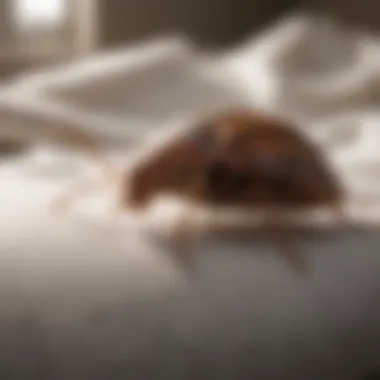
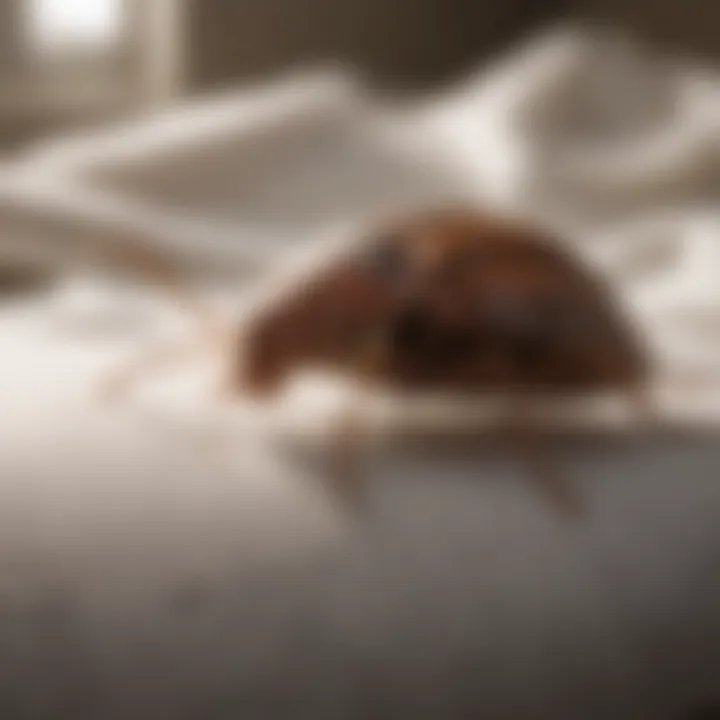
Once the affected items are determined, you can move onto effective laundering strategies to eliminate bed bugs.
Laundering Strategies
Laundering strategies are integral to the management of bed bug infestations. Effective washing and drying can remove and kill bed bugs, thereby preventing their spread.
Immediate Action Steps
Immediate action steps involve swift and thorough laundering of any potentially infested items. This is crucial to limit the spread of these pests throughout your home. The key characteristic of these steps is their urgency; timely intervention can greatly reduce the risk of more extensive infestations.
Key features of immediate action steps include:
- Immediate washing of affected items: As soon as signs are detected, wash all items in hot water. The heat kills bed bugs effectively.
- Proper drying: Follow up washing with high-heat drying to ensure that lingering bugs and their eggs are eliminated completely.
The advantages of taking immediate steps are clear; they give you a proactive approach against infestations. The disadvantage could be the potential need for a regular review of all clothing and linens post-wash to ensure no items were missed.
Long-term Solutions
Long-term solutions are essential for ensuring that bed bug infestations do not recur. After executing immediate steps, you should consider practices that help maintain a bed bug-free environment in the future. The key characteristic of long-term solutions is their focus on sustainability and prevention.
One unique feature of long-term solutions is the establishment of regular laundry routines, which may involve:
- Regularly washing bed linens and clothing: This could be weekly or bi-weekly. Regular washing reduces the chance of infestation reoccurring.
- Using protective covers for mattresses and box springs: These encasements can minimize bed bug harborage and make detection easier.
While long-term strategies require commitment and consistency, they significantly enhance overall home defenses against future infestations. Balancing immediate responses with ongoing preventative practices results in a comprehensive approach to managing bed bugs through laundry.
Best Practices for Bed Bug Management
Managing bed bugs involves more than just immediate treatment. It requires a comprehensive plan that integrates various strategies. Best practices for bed bug management focus on prevention, detection, and effective eradication methods. This section provides insight into the critical elements of managing these pests effectively, emphasizing the importance of a holistic approach that includes both proactive and reactive measures.
These practices aim to reduce the risk of infestations and to address any issues that arise swiftly and efficiently. By utilizing a multi-faceted strategy, homeowners can significantly enhance their likelihood of successfully managing bed bug problems.
Integrated Pest Management
Integrated Pest Management (IPM) is a sustainable approach that combines multiple methods to control pests while minimizing harmful effects on the environment and human health. In the case of bed bugs, IPM incorporates a range of techniques to reduce infestations, making it a vital component of best practices.
The core elements of IPM for bed bugs include:
- Monitoring and Identification: Regular checks in vulnerable areas can help identify any early signs of bed bugs. This can include inspecting mattresses, bed frames, and furniture.
- Prevention Through Sanitation: Maintaining cleanliness is essential. Vacuuming regularly and decluttering living spaces can eliminate potential hiding spots.
- Targeted Treatment: Rather than blanket chemical applications, using targeted methods can effectively address infestations. This can include the use of heat treatment or specific insecticides that minimize disruption in the home.
- Implementation of Physical Barriers: Items like mattress encasements can serve as a first line of defense against bed bugs.
By combining these practices, homeowners can create an environment that is less conducive to bed bugs, ultimately reducing the chance of infestation.
Collaboration with Pest Control Professionals
When it comes to managing bed bug infestations, collaboration with pest control professionals is often necessary. These experts possess the training and tools to handle more severe cases that may exceed the capabilities of typical home cleaning or DIY solutions. Their knowledge is particularly valuable in several areas:
- Expert Assessment: Pest control professionals can accurately assess the level of infestation and provide tailored recommendations for treatment.
- Specialized Treatments: They have access to methods and products that may not be available to the average consumer. This can include advanced insecticides and heat treatments that require professional application.
- Preventive Recommendations: Professionals can offer advice on long-term strategies to prevent future infestations based on local trends and specific circumstances.
"Effective pest control requires knowledge, expertise, and collaboration to achieve lasting results."
- Continuous Monitoring: After treatment, professionals can assist in monitoring for any signs of re-infestation, helping maintain a pest-free environment over time.
Culmination—Maintaining a Pest-Free Environment
In the ongoing battle against bed bugs, the conclusion reinforces the critical nature of persistent practices. Maintaining a pest-free environment is not just about addressing a single infestation; it requires ongoing effort and strategy. Prevention is the key. To truly manage bed bugs, homeowners must integrate effective laundry practices into their routine.
Ongoing vigilance is essential. Checking for signs of bed bugs, such as shed skins and bite marks, should be part of regular home inspections. This requires a proactive mindset, enabling early detection and intervention before a minor issue escalates into a systematic infestation. Keeping an eye on all areas where bed bugs can hide, particularly in linens and stored clothes, is beneficial. Regularly washing and drying bedding at high temperatures helps eliminate any possible presence of these pests.
Staying observant and taking immediate action can prevent a small problem from becoming a significant one.
Continued education is equally important. Understanding how bed bugs behave and reproduce allows homeowners to adopt better preventive measures. The more knowledge one has, the more empowered they will feel in combatting these pests. Resources can be found online, including articles on websites such as Wikipedia and Britannica. Participating in community forums like Reddit can also provide valuable insights from others who have faced similar challenges.
Making these practices habitual encourages a cleaner, safer living environment. Ultimately, the effective management of bed bugs hinges on the integration of knowledge, consistent efforts, and a commitment to maintaining a vigilant approach to laundry practices. By embracing these ideals, homeowners can significantly reduce the risk of infestations and foster a more comfortable home.







